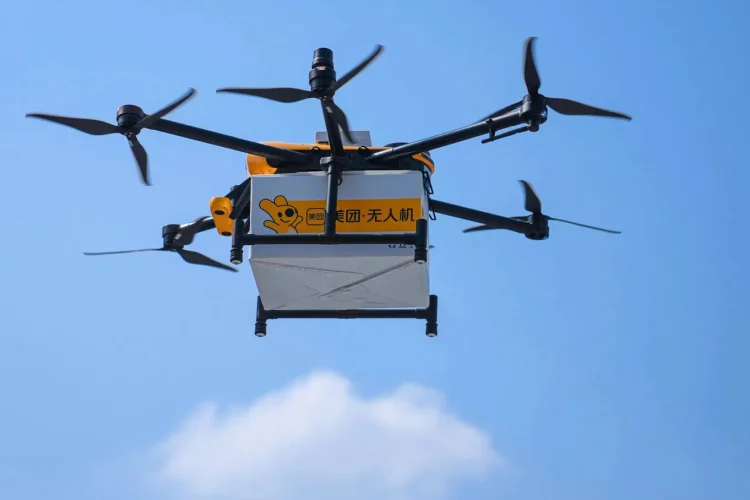China’s low-altitude economy is expanding with drones and eVTOL
Posted: 13 September 2024 | Gabriel Higgins | No comments yet
Tourists along some parts of the Great Wall of China can now receive food and other supplies via drones, as China’s low-altitude economy expands.


Credit: Meituan
China’s low-aviation economy is expanding with drones and eVTOL increasingly being utilised in the nation’s economy. Currently, more than 225,000 people have acquired the license for unmanned aircraft and qualified as drone operators. By definition, the low-altitude economy refers to an economic model that features industrial integration driven by low-altitude aviation. Traditional-style general aviation and the newly derived unmanned aircraft industry are both examples of low-altitude economy. In, 2021 the low-altitude economy was incorporated into China’s national plan.
How is low-aviation being used in China?
Tourists along the Beijing Badaling Great Wall can now enjoy this near-magic experience thanks to the first normalised drone delivery route that was recently opened. The landing spot for this route is set at the South Nine Towers area of Badaling. Before the advent of this new service, not a single stall or vending machine was set up there in order to keep the original state of the place, and visitors had to walk for almost half an hour to buy food or drinks. Now, with delivery drones in operation, consumers can enjoy such provisions much easier and faster.
Yan Yan, Public Affairs Director, of drone company Meituan, explained medical opportunities from drones: “Through drone delivery, we may cover a route that takes 50 minutes on foot in five minutes, and deliver heat relief items and emergency supplies to visitors.”
Join us live: Shaping the Next Generation of Hold Baggage and Air Cargo Screening
Join us live for an insightful webinar on 11th December at 14:00 GMT, in collaboration with Smiths Detection, as we explore the strategic balance of operational efficiency, regulatory compliance, and sustainability in high-volume security environments.
This session offers a focused look into future-proofing your security strategy.
Key learning points
- Cost Reduction: Strategies to minimize bag travel time while simultaneously reducing operational costs.
- Regulatory Roadmap: Insights into the next wave of regulatory changes and their impact on future investment decisions.
- Sustainable Systems: Practical approaches to building sustainability into security systems and lowering the total cost of ownership (TCO).
- Scalable Solutions: Real-world examples of scalable systems supporting current airport growth and preparing for tomorrow.
Register now for expert insights, case studies, and actionable strategies on operational efficiency!
What economic activity has low-aviation brought?
Low-altitude economy has received strong support in China, and the construction of the infrastructure and service guarantee systems for the low-altitude economy has accelerated, which in turn fuelled investment, and gave birth to new business models like low-altitude logistics, low-altitude agriculture, and low-altitude tourism. According to estimates, the volume of China’s low-altitude economy exceeded 500bn RMB in 2023, and the number is expected to grow to more than two trillion RMB in 2030.
In the past years, many emerging industries have evolved into new growth drivers in China’s economy. Looking into it, a vital impetus lies in the in-depth integration between technological and industrial innovation that relies on the rather complete industrial system and the huge market China boasts. The process is well exemplified by the development of the low-altitude economy, which is also a reflection of how China develops new quality productive forces and drives the high-quality development of its economy.
Stay Connected with International Airport Review — Subscribe for Free!
Get exclusive access to the latest airport and aviation industry insights from International Airport Review — tailored to your interests.
✅ Expert-Led Webinars – Gain insights from global aviation leaders
✅ Weekly News & Reports – Airport innovation, thought leadership, and industry trends
✅ Exclusive Industry Insights – Discover cutting-edge technologies shaping the future of air travel
✅ International Airport Summit – Join our flagship event to network with industry leaders and explore the latest advancements
Choose the updates that matter most to you.
Sign up now to stay informed, inspired, and connected — all for free!
Thank you for being part of our aviation community. Let’s keep shaping the future of airports together!
Related topics
Aircraft, Drones, Economy, Food and Beverage (F&B), Innovation

















